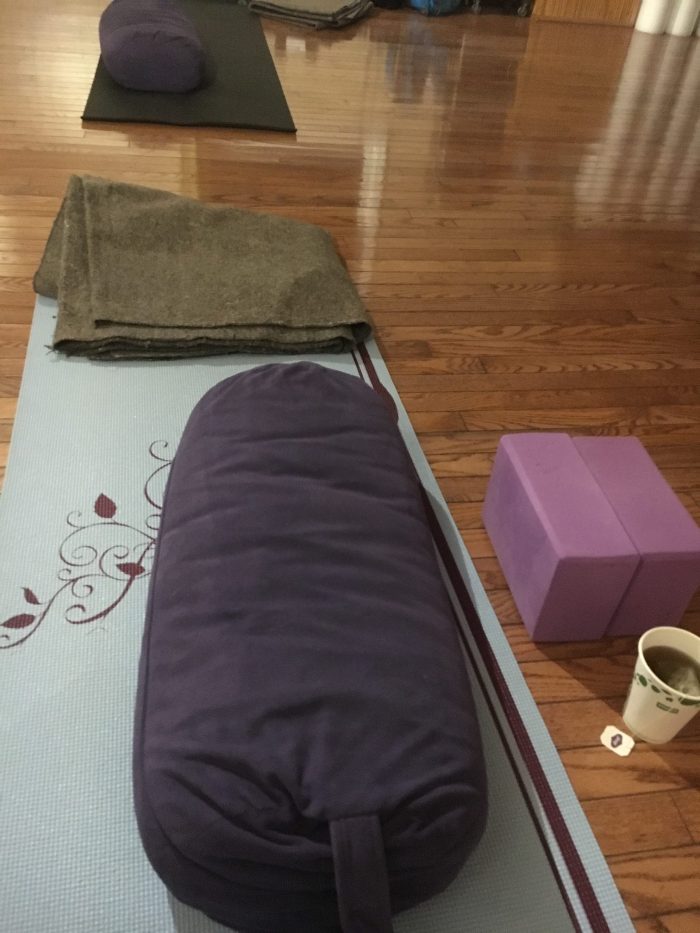Lesson Planning and Teaching Tips for New Yoga Teachers
1. Incorporate a theme
In addition to getting a good workout, people come to yoga to feel renewed and inspired. It never hurts to incorporate a theme and weave it through the class as you teach.
I am partial to framing my classes around Buddhist concepts like letting go, loving kindness, compassion and all aspects of the eightfold path. The chakra system also provides a plethora of great class theme ideas.
2. Make time for intention setting
I start out classes by offering a few minutes of silent meditation—after which I invite people to silently set an intention, make a wish or dedicate their yoga practice. I usually vocalize a group intention as well, which is related to the theme of the class that day.
For example, if we are working with the third eye, I would invoke the group intention of having intuition and paying attention to our inner feelings and sensations as we move through the asanas. This only takes a minute and it makes practice meaningful and infused with intention.
3. Give the people what they want
Usually before class or at the beginning as we are warming up, I ask each person to tell me their energy level (high, medium or low) and if there’s anything specific they’d like to work on in yoga (such as hip-openers, core strengthening, stress relief, etc). I find it best to tailor the pace and flow of the class to the people in attendance.
4. Balance silence and music
Silence is nice for the opening meditation and closing relaxation and meditation, and I usually play a pretty eclectic variety of music during the rest of the class. Sometimes I switch it up and offer mellow music during meditation and silence in asana practice.
Either way, find music that fits with your personality and the rhythm of class—and know when it’s best to let the environment be silently golden.
5. Partner up!
Maybe it makes people feel a little awkward or uncomfortable, but partner yoga is a great way to build community, deepen our stretch and bust out of our comfort zones.
If you don’t know how to teach Thai yoga massage or other partner yoga work, learn some! It’s easy and fun.
6. Mix it up
The main categories of yoga poses are: forward bends, back bends (which are heart openers), lateral/side stretches, balance poses, standing poses, seated poses, hip openers, reclining poses, inversions and twists.
It’s generally a good idea to mix in some from every category as you lead a practice. (See also: easy sequencing tips.)
~
*Wine & Wellness at Dahlonega Spa Resort, GA- book now and get a discount when you mention Elephant.
~
7. Yin is in
We are yang all the live long day—and in most of our yoga practice too. Throw in some yin after the Sun Salutations, for goodness sakes!
8. Offer modifications for all levels
Make sure to offer plenty of options for different bodies. Make your class awesome and accessible to the newbies, the intermediate and the advanced.
9. Include poetry
I’m of the opinion that our world needs more poetry in it. Offer a short poem at the beginning of class and then reread it when the students are resting in savasana at the end.
One of my favorite teachers does this, and I often adopt his inspiring technique. Bonus points if you make some copies of the poem to hand out.
10. Teach pranayama
11. Offer tea or fruit after class
Always a nice touch—and another way of building community.
12. Practice outdoors
When weather permits, there’s nothing like some yoga in the fresh air with our bare feet upon the earth.
13. Laugh it off
I find laughter to definitely be the best medicine when teaching yoga. I encourage students to lighten up, smile and laugh whenever possible.
~
*Yoga month discount at Pura Vida Retreat & Spa in Costa Rica – mention Elephant when booking.
~
14. Make adjustments
You are the instructor; be an expert in adjusting and correctly aligning poses. Of course, it’s always good to ask people before touching them, but I find that most people want to be adjusted.
15. Offer clear, direct alignment instructions
Don’t just refer to the sit bones or psoas muscle without explaining what they are. Yogi speak can sound pretty foreign to people who are coming to class for the first time. Also, be sure to give English translations for any of the Sanskrit terminology that you use.
16. Don’t short-change savasana
People love it and they deserve it after a long, challenging practice. Turn the lights down low and make final relaxation a good five minutes long. At least!
17. Say namaste
“Thank you for sharing your practice with me today.”
18. “Be yourself; everyone else is already taken.”
That Oscar Wilde was a wise one. The only tip you really need is to be yourself. Let your unique personality shine through when you teach. If you are passionate about yoga, your students will be too.
Like elephant yoga on Facebook.
Ed: Sara Crolick







Read 4 comments and reply